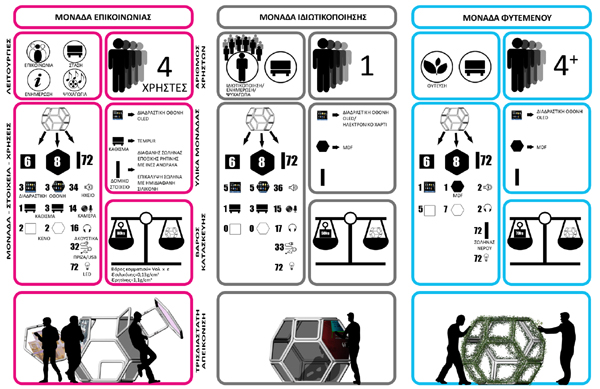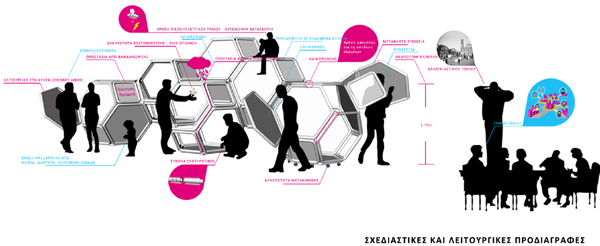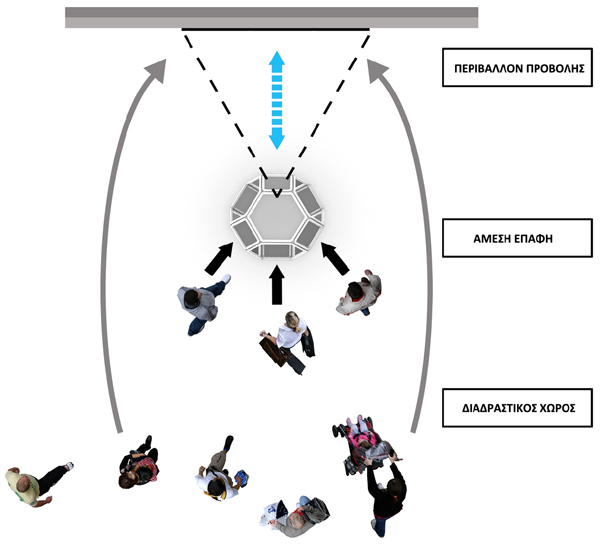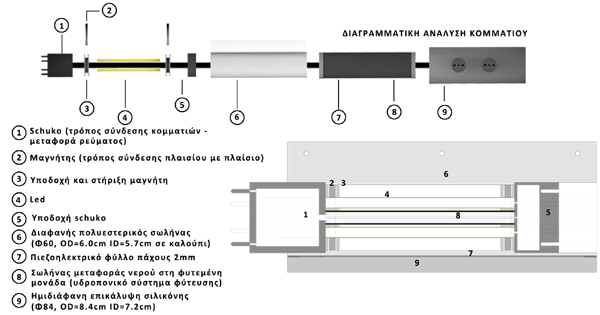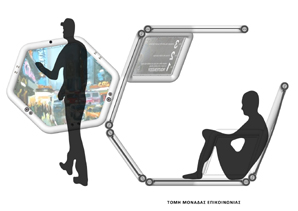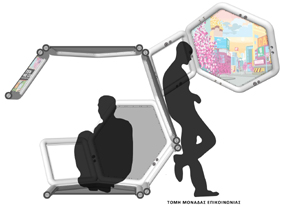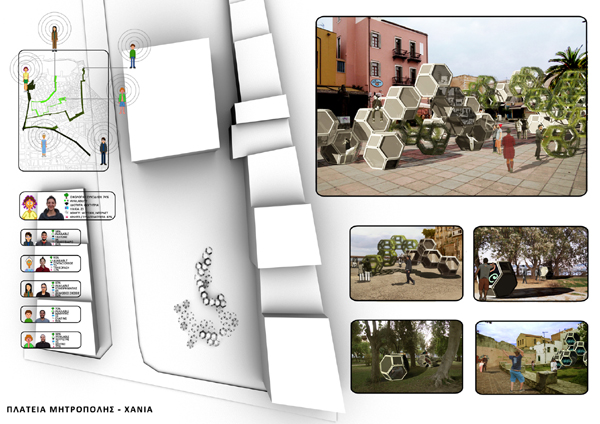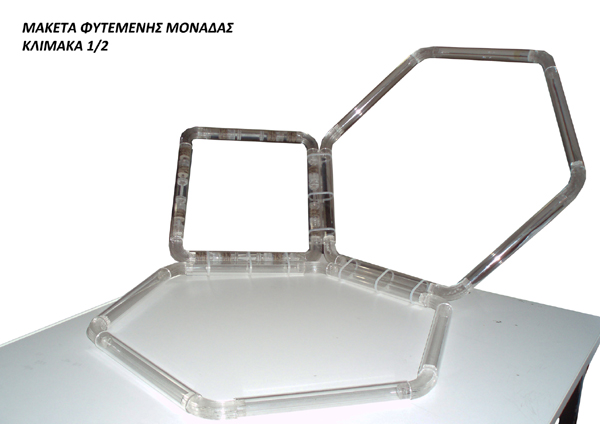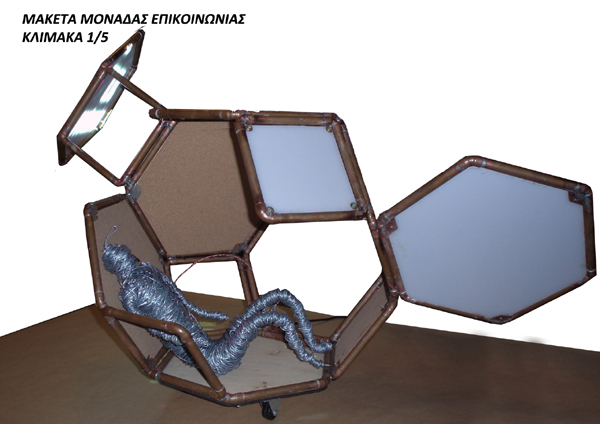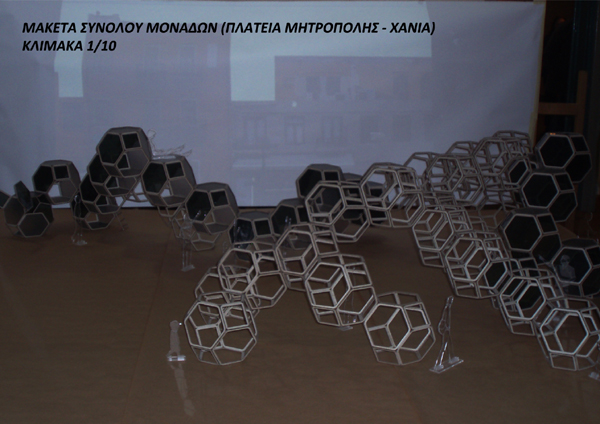STUDENTS PROJECTS
PROJECTS 2011
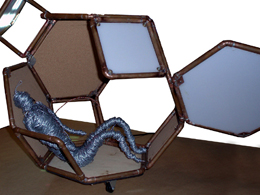
10 February, 2012
Urban Generators to Enhance Spatial Experience
In modern society of information, life in the cities moves fast guided most of the time by electronic networks and digital equipment.
Students: P. Athanailidi, A. Tomara
Supervisor Team: K. Oungrinis, S. Yiannoudes
Technical University of Crete
Presentation: December 2011
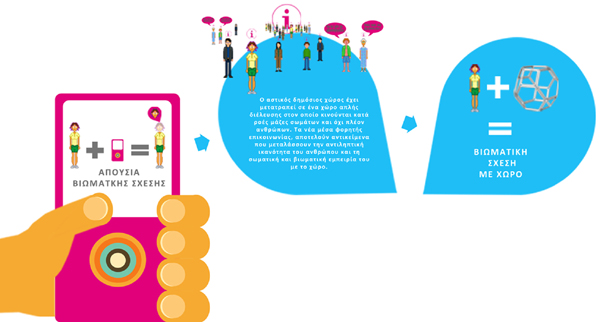
Concept definition
In modern society of information, life in the cities moves fast guided most of the time by electronic networks and digital equipment. Major role in this modern society has the new portable equipment of communication, the so - called mobile media, and more specifically the cell phone, which have caused alienation and mental absence of people in the public urban space. According to Pierre Levy, "The speaker's mind during the conversation is not where the speaker's body is, but it is mentally transported to the place of his interlocutor". Thus, masses of bodies and not people are observed to move in flows in the public urban space, concentrating according to the connection and the amount of information offered, showing the importance of information in contemporary society.
The information revolution and the domination of pictures and new technology in the public urban space brought dramatic changes in the way space is perceived. The sense of sight constitutes the only mean of perception of the contemporary world, reducing the space and time of interaction between the pedestrian and the environment.
The new technologies are called to help redefine and enhance the spatial experience and help the design of urban space and urban space equipment become more anthropocentric and multisensory.
In this direction, three objects that define this diploma project are designed and placed in the urban space either as individual units or as ensembles to activate every spot of the city. These units, redefining the definition of "communication" and "living experience" of the urban space, become the intermediate layer of managing information, something that is missing from the contemporary cities.
Moreover, these units attempt to give an answer to problems related to public urban space, such as private space, overload of stimuli, environmental stress, crowding and lack of green.
Definition of the object of design
These three objects are placed in the public urban space either as individual units, giving the users the possibility of free movement and placement depending on his needs, or as ensembles. The ensembles are formed with the combination of these three types of units and constitute cell-like forms of bigger scale that apart from the functions they offer, they also change the cityscape. The diagram below shows the design and functional specifications of the ensemble.
The number of the objects, as well as their exact position within the whole is defined after the performance of a table-game, in which the players are divided into groups according their status and needs. This game is set on every spot where the construction will be arranged. The spots where each unit is placed are mapped in a digital database, constantly informed, and every user is able to locate them with the proper application on his cell phone.
The first object (communication unit) tries to re-establish the terms of "socialization" and "social activity" in the public urban space, vitalizing the public communication and the immediate physical or not contact through interactive uses. The communication unit carries optical-acoustic materials (screens, loudspeakers, microphones, cameras) and equipment that supports the technology of augmented reality. It gives the possibility of either personal use (four users simultaneously) or public, where with the use of technology people can perceive the cityscape through many different filters (music, color, etc.), servicing entertainment, information and communication.
The second object (privatization unit) offers the possibility of temporal privatization/isolation (not alienation) from every network of localization. The outer surface of this unit is covered with electronic paper on which everyone can leave his own personal message, working as a big surface of public expression.
The third object (planted unit) tries to give an answer to the problem of the lack of green in the public urban space. The plants in every unit are placed by the users, giving the sense of participation and strengthening the sense of intimacy and personalization. The unit has an ecological character, since the plantation is done with the hydroponic system (absence of earth, water circulation through tube).
These units are not simple objects of mass production, instead they are mediators that create forms of experience with the cooperation of all senses, serving at the same time public activities. The object becomes the mean of connection and communication of the user with his environment and the others. In other words a new type of social dialogue is created, forming a new reborn environment and a new status quo concerning the public urban space.
The map and the 3D images below show one possible realization of the whole concept, installed in the city of Chania. Various people of different ages and characteristics participate and use the units according to their own needs and desires. The diagrammatic map shows the profiles of the people that participate in this specific scenario. In addition, it shows the whole path, passing by isolated or small ensembles of units, to their final destination, which is the installation at the Cathedral Square of Chania.
